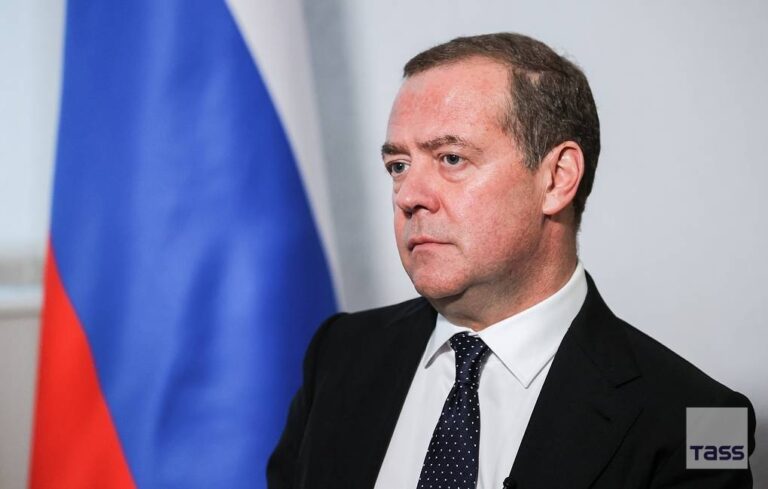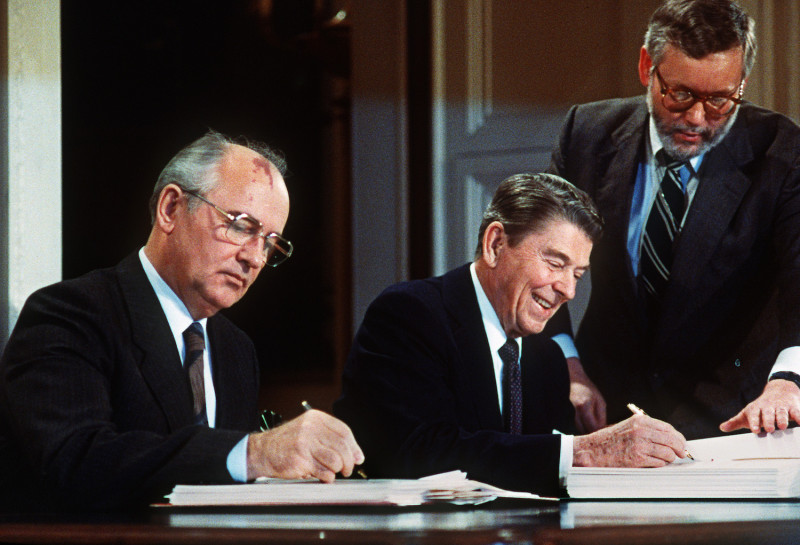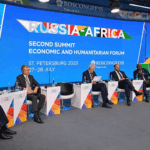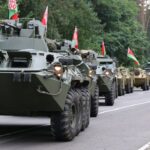On August 4, 2025, the Russian Federation announced the termination of its unilateral moratorium on deploying ground-launched intermediate-range (1,000–5,500 km) and shorter-range (500–1,000 km) missiles. This marks a significant escalation in Russia’s global military posture and revives the threat that the now-defunct Intermediate-Range Nuclear Forces (INF) Treaty once aimed to eliminate. By reintroducing such missile systems into its arsenal—and potentially deploying them near NATO’s eastern borders and in conflict zones like Ukraine—Moscow is not only heightening regional and global tensions, but also deliberately shifting the blame for this deterioration onto the United States and its allies.
Russia’s Strategy: Escalation and Narrative Control
Russia’s decision to resume the deployment of intermediate-range and short-range missile systems reflects a broader tactic of “escalation for leverage”—a method of using heightened military risk to coerce political concessions and intimidate adversaries. Moscow’s behavior exhibits several key patterns:
- Threat Inflation and Nuclear Blackmail: Russia continues to manipulate global fears by threatening the use of these missile systems, many of which can carry nuclear warheads and strike within 5–15 minutes. The short flight time drastically reduces response windows, increasing the risk of miscalculation.
- Weaponization of Propaganda: The Kremlin accuses the United States of deploying or preparing to deploy similar ground-based systems in Europe and the Asia-Pacific. Russian officials have even classified U.S.-supplied HIMARS and M270 MLRS systems in Ukraine as INF-violating platforms—a claim lacking legal or technical merit, but effective in domestic and allied propaganda narratives.
- Blame-Shifting Doctrine: Moscow seeks to avoid responsibility for escalating tensions by accusing the West of initiating a new arms race. This approach is intended to divide Western publics and policymakers, and to justify Russia’s aggressive rearmament as a “defensive necessity.”
- Testing and Battlefield Development: Russia’s use of newer missile systems like the “Oreshnik” (reportedly used in a strike on Dnipro on November 21, 2024), and the deployment of systems like the 9M729 (SSC-8), indicates active battlefield testing and normalization of these weapons outside treaty constraints.
Implications for the United States and NATO
The U.S. response to Russia’s post-INF strategy must consider the multidimensional threat posed by these missile systems:
- Arms Control Breakdown
The collapse of the INF Treaty in 2019 and the subsequent Russian abandonment of self-imposed limits further undermines the post-Cold War arms control architecture. It also endangers the future of other agreements, such as the New START, set to expire in 2026. - Increased Nuclear Risk
Deployment of intermediate-range nuclear-capable systems like the modernized 9M729 Iskander-M or RS-26 Rubezh increases the chance of a sudden or accidental nuclear exchange due to shorter flight times and ambiguous payloads. - Direct Threat to NATO Territory
Capitals in Eastern and Central Europe—Warsaw, Vilnius, Riga, Tallinn, and even Berlin—fall within range of Russia’s deployed missile systems. This threatens NATO cohesion and forces a recalibration of defense postures across the Alliance. - Regional Destabilization
Neighboring states such as Ukraine, Poland, the Baltic states, and other frontline NATO allies are placed under heightened threat. The use of advanced systems in Ukraine, especially the “Oreshnik” strike, shows Russia’s willingness to operationalize new technologies in active warzones. - Global Strategic Uncertainty
Moscow justifies its moves by pointing to alleged U.S. deployments in Asia and Europe, contributing to a narrative that may justify missile deployments in Kaliningrad, occupied Crimea, or the Far East, potentially threatening both NATO and Pacific allies.
Policy Recommendations
To counter Russia’s post-INF escalation strategy, the United States and its allies must pursue a multi-layered, coordinated response:
- Strengthen NATO’s Deterrent Posture
- Deploy additional air and missile defense systems to Eastern Europe.
- Increase the rotational presence of U.S. forces in frontline NATO states.
- Expand intelligence-sharing mechanisms with NATO members bordering Russia.
- Invest in Counter-RSCMD Capabilities
- Accelerate the development and fielding of U.S. ground-based intermediate-range systems in Europe and Asia, within the scope of arms control transparency.
- Prioritize both kinetic and non-kinetic (cyber, EW) countermeasures to Russian missile threats.
- Maintain Arms Control Pressure
- Advocate for a new multilateral framework to manage intermediate-range missile deployments, possibly involving NATO, China, and Russia.
- Condition future arms control talks on Russia’s verifiable rollback of deployed treaty-violating systems.
- Enhance Public Communication
- Proactively debunk Russian propaganda about HIMARS/MLRS being treaty-violating.
- Inform the public and partner states about the real risks of Russia’s missile deployments and nuclear coercion.
- Support for Affected Nations
- Provide military assistance and civil protection support to Ukraine, the Baltic states, and Poland.
- Prepare humanitarian contingency plans in case of further escalation, including refugee flows and cross-border destabilization.
- Sanctions and Diplomatic Isolation
- Impose targeted sanctions on Russian defense-industrial entities involved in missile development.
- Increase pressure at international forums (UN, OSCE) to frame Russia’s actions as threats to global peace and security.
Russia’s termination of its INF moratorium is not just a military maneuver—it is a calculated act of geopolitical coercion. It seeks to weaken Western unity, normalize nuclear threats, and undermine international norms. By blaming the United States for its own actions, Moscow is continuing a long-standing tradition of aggressive escalation wrapped in defensive rhetoric. The only viable response is a united, resolute, and adaptive international strategy that denies the Kremlin the strategic benefits of such provocations.
Case Studies of Russian Missile Deployments
1. Kaliningrad Oblast: A Strategic Missile Bastion on NATO’s Flank
Kaliningrad—Russia’s heavily militarized exclave between Poland and Lithuania—has long served as a forward operating base for projecting power into Europe. Since the collapse of the INF Treaty, Russia has steadily transformed the region into a missile fortress.
Key Developments:
- Deployment of 9M729 (SSC-8) Iskander-M missiles: These nuclear-capable systems are estimated to have a range of up to 2,500 km, putting Berlin, Warsaw, Stockholm, and even Paris within strike distance.
- Bastion-P coastal defense missile systems and S-400 air defense systems have been deployed to deny NATO access to the Baltic region.
- The dual-capable nature of these systems blurs the conventional-nuclear threshold and creates ambiguity during crises.
Implications:
- Escalation Risk: In a conflict, Kaliningrad could serve as a launch platform for a first-strike attempt or a “demonstration” nuclear strike.
- Deterrence Stress Test: NATO must treat any missile launched from Kaliningrad as potentially nuclear, compressing reaction time and increasing chances of miscalculation.
- Hybrid Threat Environment: Alongside missile systems, Russia has embedded electronic warfare units and special forces in the region, making Kaliningrad a hub for hybrid and kinetic operations.
2. Occupied Crimea: A Platform for Threatening Black Sea Security
Since its illegal annexation in 2014, Crimea has become one of Russia’s primary launchpads for projecting force across the Black Sea region, and a testing ground for new missile systems.
Key Developments:
- Deployment of Iskander-M systems in the Dzhankoi and Simferopol regions.
- The Bastion-P system stationed along Crimea’s southern coast allows for targeting of NATO vessels in the Black Sea, especially U.S. and Turkish ships.
- Russia has introduced Kalibr cruise missiles, often launched from naval vessels and submarines, and tested Kinzhal hypersonic missiles from nearby airbases.
Implications:
- Missile Threat to Southern NATO States: Bulgaria, Romania, and even parts of Italy fall within the strike radius of missiles stationed in Crimea.
- Pressure on Ukraine and the Danube corridor: Missile deployments restrict Ukraine’s access to maritime trade and increase risk to Danube ports like Izmail, already targeted in 2024.
- Destabilization of the Black Sea security architecture, especially for grain export routes and energy corridors.
3. Donbas and Eastern Ukraine: A Combat Testing Ground for New Missile Systems
Unlike Kaliningrad and Crimea, the Donbas is an active warzone, making it a live laboratory for testing and refining Russian missile capabilities under battlefield conditions.
Key Developments:
- In November 2024, Russia used the “Oreshnik” missile—an advanced cruise or hybrid missile system—against the city of Dnipro, indicating its willingness to use strategic-range missiles in conventional roles.
- Deployment of modified Iskander-M systems near Luhansk and Donetsk to target cities in central Ukraine and strategic infrastructure.
- Field testing of loitering munitions and dual-use missile systems designed to evade detection and confuse missile defense.
Implications:
- Normalizing Treaty-Violating Systems: Systems like the 9M729 and Oreshnik are likely in violation of the former INF Treaty, and their use in Ukraine signals that Russia sees no political cost in deploying them.
- Message to NATO: By striking Ukraine with systems capable of reaching NATO territory, Russia signals that Western capitals are not immune should they deepen support to Ukraine.
- Crisis Acceleration: Battlefield deployment makes it harder to distinguish between tactical battlefield missiles and strategic ones—raising the risk of regional spillover or NATO misinterpretation.
Synthesis: Strategic Use of Geography for Escalation
Russia’s deployments in Kaliningrad, Crimea, and the Donbas represent a geographically distributed threat matrixaimed at encircling NATO’s eastern flank, testing missile defense systems, and forcing the West to operate under permanent uncertainty. Each location serves a strategic role:
| Region | Strategic Function | Key Targets |
| Kaliningrad | Power projection into Central Europe & Baltic region | NATO capitals, U.S. bases in Poland |
| Crimea | Maritime control & NATO southern flank threat | Black Sea, Romania, Bulgaria |
| Donbas | Battlefield testing & psychological warfare | Ukrainian cities, symbolic targets |
These deployments are not isolated—they are components of a broader strategy to intimidate NATO, undermine Western unity, and dismantle arms control norms.
Russia’s formal withdrawal from the INF Treaty framework and the resumption of missile deployments across strategically sensitive regions—Kaliningrad, Crimea, and the Donbas—are deliberate moves that pose a growing and multifaceted challenge to global stability. The use of battlefield conditions to normalize treaty-violating systems and the threat of near-instant nuclear or conventional strikes against NATO and partner nations demonstrate Moscow’s return to Cold War-era coercion tactics, now reinforced with modern technology and information warfare.
To effectively counter these actions, the United States and its allies must treat missile deployments in these regions not as isolated incidents, but as components of a unified Russian strategy of coercion through escalation, and respond with an equally integrated strategy that combines military preparedness, information resilience, arms control diplomacy, and sustained international pressure.
The difference in Russia’s approach to the INF Treaty during the Cold War and now reflects a fundamental shift from a rule-bound superpower rivalry to an opportunistic strategy of coercion, denial, and escalation. Here’s a structured comparison of both periods:
1. Strategic Context
| Aspect | Cold War (Soviet Union) | Today (Post-2014 Russia) |
| Global System | Bipolar world (U.S. vs USSR), ideological conflict between communism and capitalism. | Multipolar system with weakened arms control norms and increased regional instability. |
| Primary Goal | Strategic parity with the U.S.; avoid nuclear war through mutual deterrence. | Regain strategic leverage; intimidate NATO and neighboring states; challenge Western order. |
2. INF Treaty Approach
| Aspect | Cold War Era (1987 INF Treaty) | Current Russian Strategy (Post-2019 Withdrawal) |
| Motivation | Prevent Europe-based missile crisis; avoid U.S. Pershing II & Soviet SS-20 confrontation. | Restore the ability to deploy regional missile threats; bypass arms control constraints. |
| Position on Treaty | USSR initially resisted, but later signed under U.S. pressure and domestic concerns (e.g., fear of arms race). | Russia sees INF constraints as limiting its ability to coerce NATO and dominate post-Soviet space. |
| Compliance | Agreed to eliminate all ground-based INF missiles; over 2,600 were destroyed by 1991. | Developed and tested treaty-violating systems like 9M729 while denying violations. |
| Public Messaging | Promoted INF as a peace achievement (especially under Gorbachev). | Claims U.S. violated it first (e.g., Aegis Ashore in Romania), presents itself as a victim of Western aggression. |
3. Use of INF-Range Missiles
| Aspect | Cold War | Today |
| Geographic Focus | Europe—the potential battleground for superpower confrontation. | Broader: Europe, Ukraine, Asia-Pacific, Arctic. |
| Military Logic | Avoiding nuclear escalation and battlefield miscalculations in Europe. | Creating ambiguity and pressure through dual-use missile systems with unclear payloads. |
| Deployment Status | Agreed to dismantle SS-20, SS-4, Pershing II, and similar systems. | Actively deploying and testing systems with INF-range capabilities: Iskander-M, 9M729, RS-26, “Oreshnik.” |
4. Escalation and Deterrence Doctrine
| Aspect | Soviet Doctrine | Modern Russian Doctrine |
| Use of Missiles | Strategic deterrence; emphasis on balance and MAD (Mutually Assured Destruction). | Tactical coercion; emphasizes “escalate to de-escalate”—threatening limited nuclear use to force concessions. |
| Crisis Management | INF Treaty was part of risk reduction and crisis stability. | INF withdrawal increases risk and uncertainty, used as a tool of strategic intimidation. |
5. Arms Control Philosophy
| Aspect | Then | Now |
| Engagement | Arms control was central to U.S.-Soviet dialogue (START, SALT, INF). | Arms control seen by Russia as asymmetric—limiting its power while the West retains flexibility. |
| Verification | Treaty included robust inspections and transparency. | Russia avoids inspections, rejects allegations, and weaponizes denial and ambiguity. |
| Current Trends | Mutual restraint, desire for predictability. | Unilateralism, brinkmanship, and selective rejection of rules-based order. |
6. Political Messaging
| Aspect | Cold War | Now |
| Narrative | Peace through parity; superpowers managing nuclear risk. | “Western betrayal,” NATO encirclement, need for Russian “strategic sovereignty.” |
| Target Audience | Global public opinion, U.S. arms control community. | Domestic Russian audience, NATO publics (to sow fear), Global South (anti-Western solidarity). |
Summary of Key Differences
| Category | Soviet Era | Modern Russia |
| INF View | A burden but accepted to avoid nuclear war in Europe. | A constraint on regional power projection, gladly discarded. |
| Policy Logic | Strategic parity, deterrence, risk reduction. | Tactical coercion, escalation, and regime survival. |
| Arms Control Attitude | Cooperative (late Cold War), verification-based. | Hostile, denial-based, and asymmetrically applied. |
| Goal | Prevent arms race in Europe. | Reignite arms race on Russia’s terms and intimidate adversaries. |
The Kremlin (under Mikhail Gorbachev) agreed to sign the Intermediate-Range Nuclear Forces (INF) Treaty in 1987 due to a combination of strategic pressure, economic necessity, and diplomatic recalibration. Because of:
1. Strategic Military Pressure from the U.S. and NATO
- U.S. Pershing II and Ground-Launched Cruise Missiles (GLCMs) were deployed in Europe in the early 1980s to counter Soviet SS-20 missiles.
- These U.S. systems had extremely short flight times to Soviet command centers, increasing the risk of decapitation strikes.
- The Kremlin realized it could no longer guarantee a survivable second strike, which undermined Soviet deterrence.
🔍 Gorbachev’s conclusion: The balance was not in Moscow’s favor—escalation would bring unacceptable risks.
2. Economic and Technological Exhaustion
- The arms race with the United States was unsustainable for the Soviet economy.
- Maintaining and modernizing the SS-20 missile arsenal—and preparing for new U.S. deployments—diverted massive resources from domestic priorities.
- The Soviet Union was already facing stagnation, food shortages, and growing national debt.
Gorbachev reportedly said: “We can’t go on like this. We need to break the vicious circle.”
3. Political Shift Toward Reform and De-escalation (Perestroika & Glasnost)
- Gorbachev wanted to reduce tensions with the West to allow for domestic political and economic reforms.
- The INF Treaty aligned with “new thinking” in Soviet foreign policy: cooperation over confrontation, stability over expansion.
- It was part of a broader effort to reset Soviet relations with the U.S. and Europe.
4. Global and European Public Opinion
- The anti-nuclear movement in Europe was massive in the 1980s—especially in West Germany, the UK, and the Netherlands.
- Moscow wanted to appear as the reasonable actor to divide NATO politically and win support in Western European capitals.
Signing the INF helped the USSR regain soft power in Europe and marginalize U.S. hawks.
5. Reagan-Gorbachev Diplomacy and Trust Building
- Personal diplomacy between Ronald Reagan and Mikhail Gorbachev played a crucial role.
- Reagan was convinced of the need to reduce nuclear weapons and open a new era of dialogue, especially after Geneva (1985) and Reykjavik (1986) summits.
- Gorbachev saw the opportunity to lock in arms control gains and stabilize the superpower rivalry.
6. Confidence in Verification Systems
- Despite initial Soviet resistance to on-site inspections, Gorbachev eventually accepted them as a confidence-building measure.
- The treaty included unprecedented verification mechanisms, which reassured both sides of compliance.
7. Mutual Benefits: Eliminating an Entire Class of Weapons
- The INF Treaty was balanced—both sides eliminated their entire inventories of ground-launched missiles with ranges between 500 and 5,500 km.
- The Soviet Union had to dismantle more systems, but the Kremlin calculated the long-term gains outweighed the short-term loss.
Summary: Why the Kremlin Agreed to INF (1987)
| Factor | Description |
| Strategic Pressure | U.S. deployments in Europe neutralized Soviet advantage. |
| Economic Strain | Arms race was unsustainable; economy was collapsing. |
| Domestic Reform Needs | Gorbachev needed détente to focus on internal restructuring. |
| Diplomatic Gain | Projected USSR as peace-seeking; divided NATO. |
| Leadership Change | Gorbachev’s ideology prioritized cooperation over confrontation. |
| Verification Confidence | Willingness to accept inspections indicated trust and pragmatism. |





